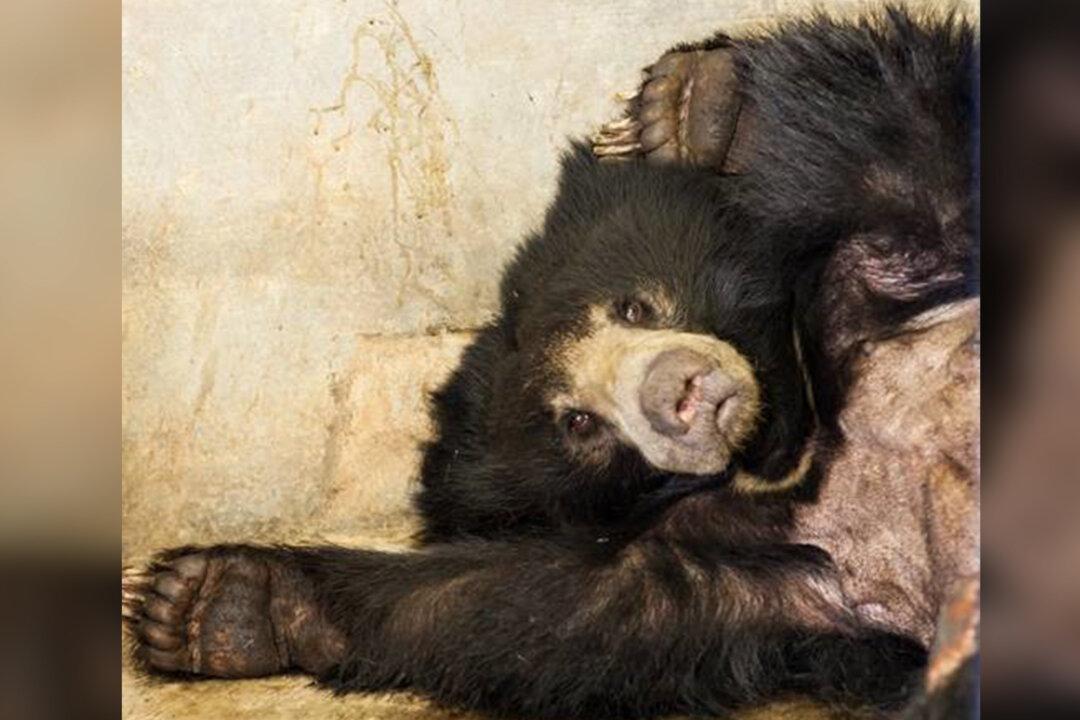Warning: Graphic images inside
A severely injured sloth bear was rescued from a village in southwest India after being spotted by locals on Feb. 12, 2020. She had suffered from gunshot wounds in her spine and crawled until her knees were bloody. The bear’s ongoing struggle is an emblem for the plight of India’s vulnerable wildlife.





